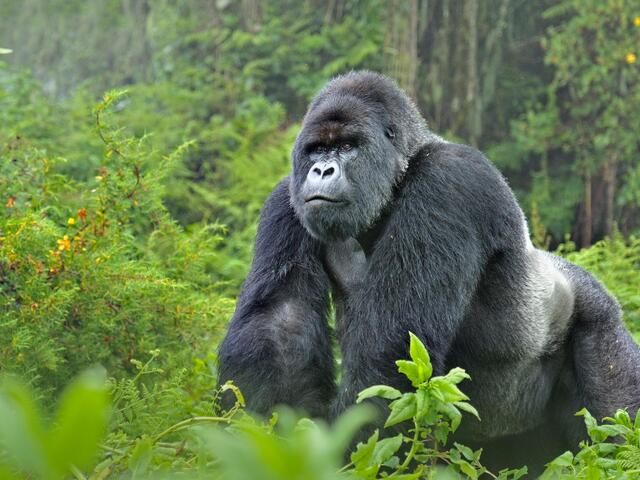
In the lush forests of central Africa, the majestic mountain gorilla, a critically endangered species, is finding new hope amidst ongoing conservation efforts. Despite facing threats from habitat loss and poaching, recent reports suggest a promising increase in their numbers, providing a glimmer of hope for the future of these iconic primates.
The mountain gorilla, scientifically known as Gorilla beringei beringei, is native to the volcanic slopes of the Virunga Massif, spanning the borders of Rwanda, Uganda, and the Democratic Republic of the Congo, as well as the Bwindi Impenetrable Forest in Uganda. These gentle giants, known for their imposing size and gentle demeanor, have long captured the fascination of wildlife enthusiasts and researchers alike.
According to the latest assessments conducted by conservation organizations and wildlife authorities, the population of mountain gorillas has shown a steady increase in recent years. This positive trend is largely attributed to concerted conservation efforts, including habitat protection, anti-poaching patrols, community engagement, and sustainable tourism initiatives.
One of the key factors contributing to the success of conservation efforts is the collaboration between governments, conservation organizations, local communities, and international partners. By working together, stakeholders have been able to implement comprehensive conservation strategies aimed at safeguarding the mountain gorilla population and their fragile habitats.
Despite these encouraging developments, mountain gorillas continue to face significant threats to their survival. Habitat loss due to deforestation, human encroachment, and agricultural expansion remains a pressing concern, fragmenting their habitat and limiting their access to food sources.
Moreover, the illegal wildlife trade, including poaching and trafficking of gorilla body parts, poses a grave threat to the species. Gorillas are often targeted for their body parts, which are used in traditional medicine or sold as exotic trophies, driving demand for their illegal trade.
In response to these ongoing challenges, conservation organizations and authorities are intensifying their efforts to address the root causes of habitat destruction and poaching. This includes implementing stricter law enforcement measures, expanding protected areas, promoting sustainable land-use practices, and raising awareness about the importance of gorilla conservation.
The recent resurgence in the mountain gorilla population serves as a testament to the power of conservation efforts when communities, governments, and conservationists unite in their commitment to protect endangered species and their habitats. As we continue to strive towards a sustainable future, the plight of the mountain gorilla serves as a poignant reminder of the urgent need to conserve our planet’s rich biodiversity for generations to come.
